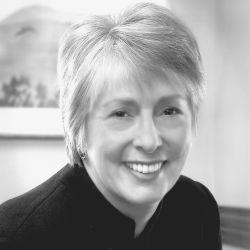
It’s not easy to quantify, but statistics and anecdotal evidence confirm that efforts to increase computer science and STEM (science, technology, engineering, and mathematics) research opportunities at community colleges are making headway.
"There is a strong correlation between undergrad research opportunities and persistence in science-related programs of study and career," says Nancy Hensel, former executive officer of the Washington, DC-based Council on Undergraduate Research (CUR). "And since nearly 50% of university students begin their education at two-year colleges, undergrad research experiences must become commonplace on community college campuses."
Earlier this month, at a briefing for educators, Hensel talked about the initial progress made so far under a U.S. National Science Foundation (NSF) grant. CUR, in partnership with the National Council of Instructional Administrators (NCIA) in Lincoln, NE, is holding workshops to help community colleges develop their undergrad research programs.
"What we’ve found — and what we recently published — is that there’s more undergrad research going on at community colleges than we’d thought because, frankly, we didn’t think there would be any. But it’s still not a lot," says Hensel. "When it does occur, it’s typically in the areas of computer science and STEM."
She estimates that of the 100 community colleges involved in the project — which is about 10% of community colleges in the country — about one-third have some level of undergrad research going on. "The other two-thirds," Hensel says, "have each developed an action plan to get some research started. We will follow up with them shortly to see how well they do with that."
The challenges seem to be mostly budgetary. Some good examples of STEM research at community colleges, Hensel says, include:
- Southwestern Community College, Chula Vista, CA, which is emphasizing research activities at four-year institutions and corporate and government laboratories, including some work on nano technology.
- Redlands Community College, Redlands, OK, which is incorporating applied research into the curriculum of several academic programs, especially in its math, science, and agriculture departments.
- Oklahoma City Community College, Oklahoma City, OK, whose Clinical Research Program trains students to work with physicians, research nurses, and clinical research coordinators to perform studies involving human research participants.
Brent Cejda, former executive director of the National Council of Instructional Administrators, points to four statistics to support the idea that research efforts are succeeding:
- The NSF reports that 50% of African-Americans, 55% of Latinos, and 64% of American-Indians who hold BA or MA degrees in science or engineering had attended a community college.
- Of the students who receive BA or MA degrees in STEM fields, 44% attended a community college at some point in their careers.
- The NSF has documented that over 40% of all undergrad STEM courses and more than one third of all undergrad STEM course enrollments are at two-year institutions.
- Although national data isn’t available, conservative estimates suggest that more than 40% of elementary and middle school teachers completed some — if not all — of their science and mathematics course work at two-year colleges, Cejda says.
"It’s difficult to measure the progress," says Cejda, "and as far as I know there is no quantifiable national data available. But I will say that when we invited industry in to speak to educators about research partnerships with community colleges, right off the bat we got the Centers for Disease Control, the Jet Propulsion Laboratory, the Adler Planetarium in Chicago, and several of the major medical facilities in Boston. With that sort of enthusiasm, I’m hoping to see some real progress."
Paul Hyman was editor-in-chief of several hi-tech publications at CMP Media, including Electronic Buyers’ News.



Join the Discussion (0)
Become a Member or Sign In to Post a Comment